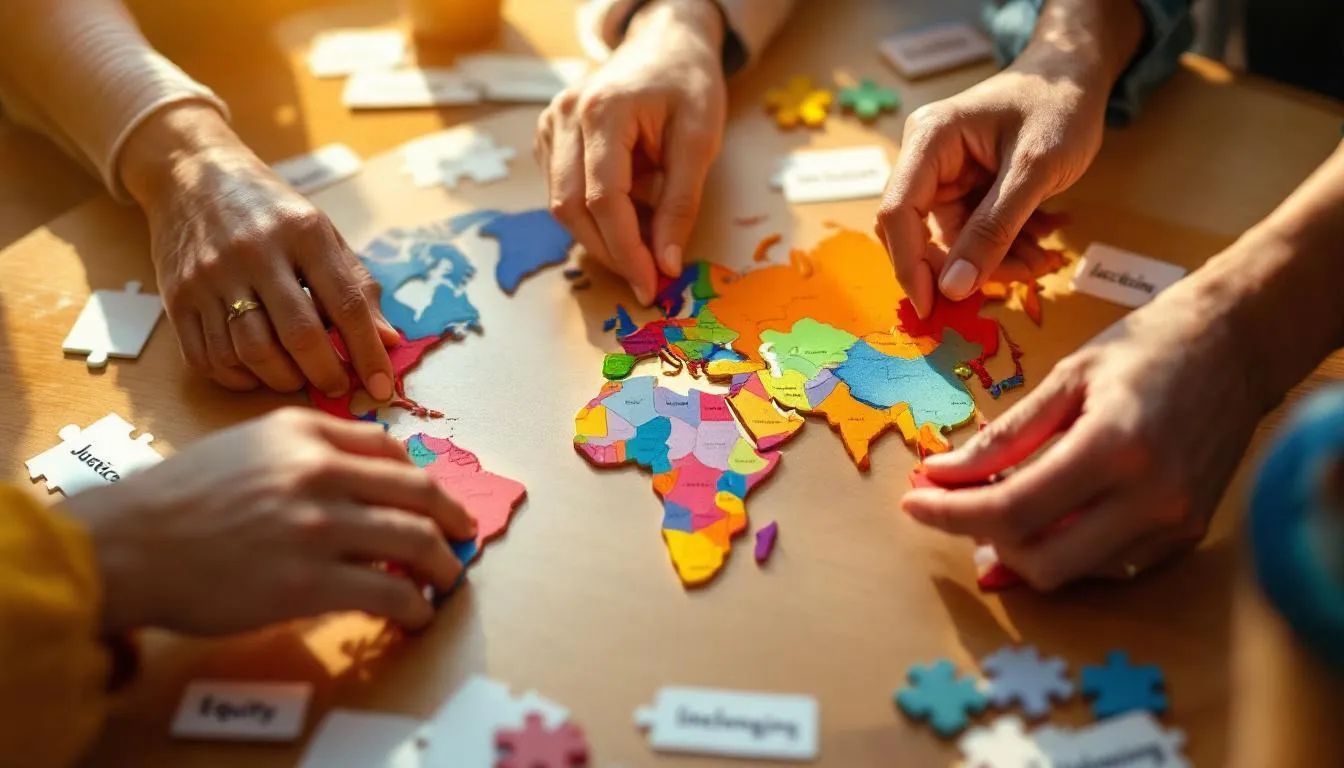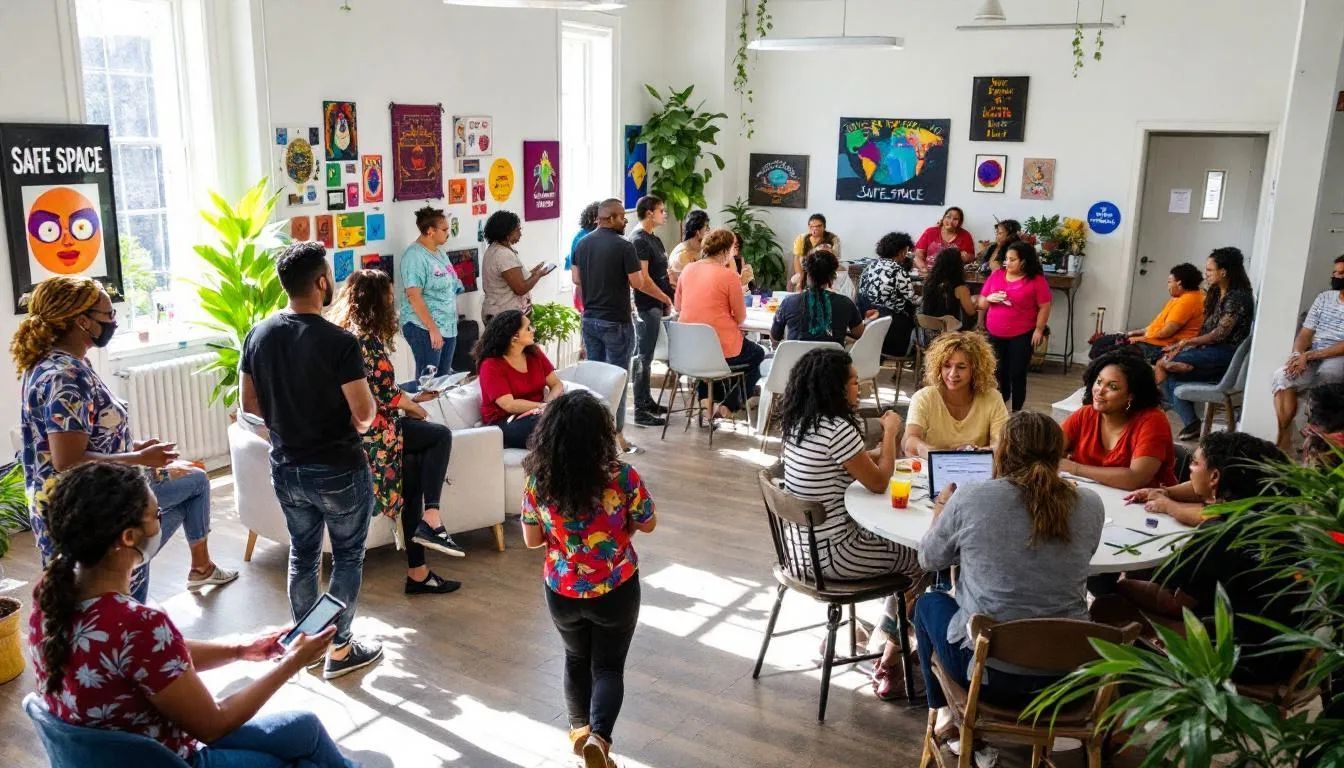In a world where diversity is both a reality and a resource, cultural engagement programs have become essential for building truly inclusive communities. Whether you’re a leader in education, business, or the nonprofit sector, understanding how to design and implement these programs can transform environments, foster authentic connections, and drive innovation. But what exactly makes cultural engagement programs so powerful in 2025 and beyond? And how can you launch one that genuinely makes a difference? Let’s explore the strategies, stories, and steps that will help you turn intent into impact.
Why Cultural Engagement Matters in 2025 and Beyond
Social Justice, Belonging, and Wellbeing
Today’s communities are more diverse than ever, yet true inclusion remains a work in progress. Cultural engagement programs help bridge gaps by creating spaces where every voice matters. These initiatives address critical issues like social justice, equity, and representation, ensuring that marginalized groups feel seen and heard.
When people feel a sense of belonging, their wellbeing improves. According to research from the American Psychological Association, inclusivity is directly linked to mental health and resilience. Programs that celebrate different backgrounds and perspectives can reduce isolation and foster collective empathy.
"A welcoming and just environment rooted in justice, equity, inclusion, and diversity supports all students in their growth and success."
— Center for Cultural Engagement and Inclusion, Cal Lutheran University
Recruitment, Retention, and Brand Reputation
For organizations, cultural engagement programs offer a competitive edge. They help attract and retain top talent by signaling a genuine commitment to diversity and inclusion. Employees, students, and members are more likely to stay when they feel valued and understood.
A strong culture of engagement also enhances brand reputation. Companies and institutions recognized for their inclusive practices are more appealing to customers, partners, and the wider community. They become known as places where everyone can thrive.
Global Competence in Hybrid Workplaces
The rise of hybrid and remote work has expanded the boundaries of community. Teams now span continents and cultures, making global competence a must-have skill. Cultural engagement programs prepare individuals to collaborate across differences, navigate cultural nuances, and communicate effectively in any setting.
Platforms like Neroia make it easier to foster these connections by recommending small-group activities tailored to diverse interests and backgrounds. In a hybrid world, such tools help organizations keep engagement genuine and effortless.
Defining Cultural Engagement Programs

Core Purpose and Guiding Principles
At their heart, cultural engagement programs are intentional efforts to create environments where people from all backgrounds can connect, learn, and contribute. Their core purpose is to cultivate mutual respect, understanding, and shared growth.
Guiding principles include:
- Equity and accessibility for all participants
- Ongoing learning and open dialogue
- Celebration of diverse identities and experiences
- Empowerment of individuals to lead and influence change
These programs are not one-off events but continuous journeys that evolve with the needs of the community.
Common Venues: Campuses, Companies, and Communities
Cultural engagement programs flourish in many settings:
- Campuses: Universities and colleges often have cultural centers, clubs, and mentorship initiatives designed to support students from various backgrounds.
- Companies: Businesses launch employee resource groups, diversity training, and inclusive events to enhance workplace culture.
- Community Organizations: Nonprofits, faith groups, and local governments create programs to connect residents, celebrate heritage, and address social challenges.
Each venue adapts the core principles to its unique audience and goals, but the underlying mission remains the same: building bridges across differences.
Who Benefits and Why It Works
Everyone stands to gain from cultural engagement programs:
- Individuals experience greater belonging, confidence, and personal growth.
- Organizations benefit from improved collaboration, innovation, and retention.
- Communities become more resilient, empathetic, and united.
These programs work because they move beyond surface-level diversity and foster meaningful relationships. By engaging people in shared activities, honest conversations, and collaborative projects, they create lasting change.
Core Components of Successful Programs
Leadership Vision, Mission, and Values
Every effective cultural engagement program starts with clear leadership commitment. Leaders articulate a vision that prioritizes inclusion, set measurable goals, and model the values they want to see.
A compelling mission statement guides decision-making and inspires participation. For example, the Office of Student Engagement and Cultural Affairs at the Keck School of Medicine emphasizes respect, open communication, and accountability—values that shape every interaction.
Physical and Virtual Safe Spaces
Safe spaces, both physical and virtual, are essential. On campuses, these might be lounges or centers where students gather to share experiences and find support. In the workplace, digital platforms like Neroia create secure environments for colleagues to connect, regardless of location.
Physical spaces offer comfort and visibility, while virtual spaces ensure accessibility for remote or hybrid participants. Both types foster trust and openness, making it easier for people to engage authentically.
Learning Events, Dialogues, and Mentorship
Successful programs offer a mix of activities:
- Learning Events: Workshops, guest speakers, and cultural celebrations introduce new perspectives and challenge biases.
- Dialogues: Facilitated discussions encourage participants to share stories, ask questions, and build empathy.
- Mentorship: Pairing individuals from different backgrounds promotes skill-sharing and mutual support.
This combination of education, conversation, and relationship-building drives lasting impact.
Inspiring Models and Case Studies
University Cultural Engagement Centers
The Center for Cultural Engagement and Inclusion at Cal Lutheran University provides a welcoming space for all students, with a special focus on BIPOC and LGBTQ+ communities. Their approach includes:
- Social justice education
- Affiliated student clubs
- Multicultural events
- Leadership development
By empowering students to lead positive change, they cultivate a campus culture rooted in justice, equity, and diversity.
Study-Abroad Integration Initiatives
AIFS Abroad’s Cultural Engagement Initiative demonstrates how international education can foster global competence. The program integrates:
- Onsite staff training
- Intercultural competency workshops
- Listening circles and feedback sessions
- Inclusive housing and support resources
These efforts ensure that students not only study abroad but also engage deeply with local cultures, building skills that last a lifetime.
Faith-Based Engagement Tracks
Liberty University’s Bachelor of Science in Apologetics and Cultural Engagement prepares students for leadership roles in ministry, nonprofits, and education. The curriculum combines:
- Biblical and theological studies
- Contemporary cultural analysis
- Practical communication skills
By equipping students to address complex social issues with compassion and clarity, the program shapes future leaders who can bridge faith and culture.
Designing Your Own Program: A Step-by-Step Roadmap

Creating a successful cultural engagement program requires careful planning and collaboration. Here’s a practical roadmap to guide your efforts:
- Assess Needs and Gather Diverse Voices
Start by listening. Survey your community, hold focus groups, and invite feedback from underrepresented groups. Understanding unique needs and aspirations is the foundation for relevance and buy-in. - Set SMART Objectives and Secure Resources
Define Specific, Measurable, Achievable, Relevant, and Time-bound goals. Identify funding, staff, and technology needed to support your vision. Seek partnerships with organizations like Neroia to leverage innovative engagement tools. - Launch, Communicate, and Celebrate Milestones
Roll out your program with clear communication. Use multiple channels—emails, social media, in-person events—to reach all audiences. Celebrate early wins and share stories to build momentum.
"Cultural engagement is a practice and an approach; we embrace that the work does not end but evolve, and that we must build an environment of real talk and take action to improve."
— AIFS Abroad
Measuring Impact and Ensuring Sustainability
Quantitative KPIs and Dashboards
To track progress, establish key performance indicators (KPIs) such as:
- Participation rates
- Event attendance
- Retention and satisfaction scores
- Representation in leadership roles
Dashboards and data analytics help visualize trends and identify areas for improvement.
Qualitative Feedback Loops and Storytelling
Numbers tell part of the story, but personal experiences reveal the heart of your program. Collect testimonials, host reflection sessions, and encourage storytelling. These insights highlight successes, uncover challenges, and inspire ongoing commitment.
Continuous Training and Program Evolution
Sustainability depends on adaptability. Offer regular training for staff and participants to keep skills sharp and perspectives fresh. Review feedback, update goals, and evolve activities to meet changing needs.
"We may not always get it right, but we are always committed to doing our best and learning in the process."
— AIFS Abroad
Resources and Next Steps for Changemakers
Grants, Toolkits, and Online Courses
Many organizations offer support for cultural engagement programs. Consider these resources:
- Grants: Seek funding from local governments, foundations, and corporate sponsors.
- Toolkits: Use guides from diversity and inclusion organizations to design and evaluate your program.
- Online Courses: Platforms like Coursera and edX offer training in cultural competence and program management.
Professional Networks and Annual Conferences
Join professional associations, attend conferences, and connect with peers in your field. Sharing best practices accelerates learning and strengthens your impact.
Final Thoughts: Your Role in Shaping Inclusive Futures
Building an inclusive community is a journey, not a destination. Whether you’re just starting out or refining an existing program, your efforts matter. By championing cultural engagement programs, you help create spaces where everyone can belong, contribute, and grow.
For organizations seeking to effortlessly discover and nurture authentic connections, platforms like Neroia offer a flexible, user-centric solution that adapts to the needs of modern, hybrid workplaces.
The future of inclusion starts with you—one conversation, one initiative, one connection at a time.




